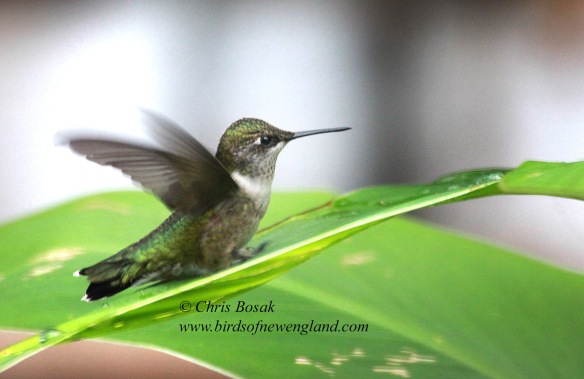
Summer heatwaves are nothing new to New England. It seems as if every year we go through two or three stretches of enduring hot and humid weather. Summer heatwaves are as much a New England thing as bitter cold stretches in the winter.
It seems as if the winter weather is what most people associate with New England, however. Skiing, shoveling and sitting around the fireplace are the images often depicted when describing New England. I’m guilty of that myself as every winter it seems I write a column about how birds survive bitter cold stretches.
In this column, I’ll look at how birds survive the other temperature extreme. Birds can’t exactly turn on air conditioners or take a dip in the pool or lake (not in the way that humans do anyway). They do have several mechanisms for dealing with the heat and have survived these heatwaves for centuries.
Some of the coping mechanisms are similar to those employed by humans. Birds will seek shade and water when the sun is burning down. I was walking down a road the other morning and it was already unbearably hot and humid. As I walked under the canopy of an oak tree, I felt instant relief. There was even a slight comfortable breeze that I hadn’t noticed when I was in the sun. Trees provide relief from the direct heat of the sun and allow birds to regulate their body temperature.
Birds will also seek out water sources such as streams, lakes and birdbaths when the temperature soars. They may not plunge themselves into the water like a human would do, but they splash around or take sips of water to keep cool. It’s important to keep your birdbaths clean and filled with fresh water during the summer. During extremely hot and dry weather, birdbaths should be cleaned every few days. This is when the birds really need that water.
Shorebirds in particular utilize water during hot days as shade is rare or nonexistent on beaches. They will wade in with both feet or even dip down to soak their feathers. If they have nestlings, shorebirds will return to the nest and shake off their wet feathers to cool off the youngsters.
Water also helps keep birds clean, which is another important factor in keeping cool. Bathing and preening remove dirt and excess oil from their feathers. This enables better air circulation and insulation. Bathing also helps in reducing parasites and keeping feathers in good shape.
Birds are typically more active during the morning and evening, but this is particularly true during hot summer days. This is a commonsense example of simply avoiding the sun when it is at its hottest. For nature watchers who are willing to brave the extreme conditions, that means focusing your efforts on other critters such as butterflies, dragonflies, snakes, frogs or anything else active during the day.
Finally, and perhaps most importantly, birds have an efficient thermoregulation system, which allows them to survive extremely hot or cold conditions by adjusting their metabolic rate and circulatory system to fit the current need. Panting increases airflow over their respiratory system and releases heat from their bodies. Panting, of course, is a cooling mechanism used by dogs and other mammals too.
Just like the cold New England winters, our hot summers can be challenging for birds too. Luckily, they know just what to do.
